Chapter: Programming and Data structures : Advanced Non-Linear Data Structures
Fibonacci Heaps
FIBONACCI HEAPS:
Binomial Tree:
A binomial tree of order 0 is a single node. A binomial tree of order k has a root of degree k and its children are roots of binomial trees of orders k-1, k-2, ..., 2, 1, 0 (in order). A binomial tree of order k has 2k nodes.
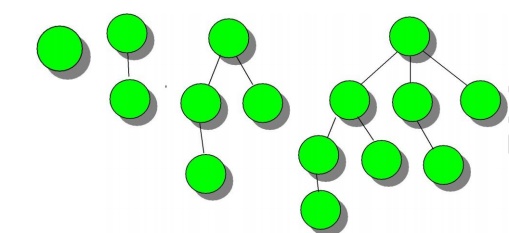
Data Structures:
· Heap ordered Trees
· Rooted, but unordered
· Children of a node are linked together in a Circular, doubly linked List, E.g node 52
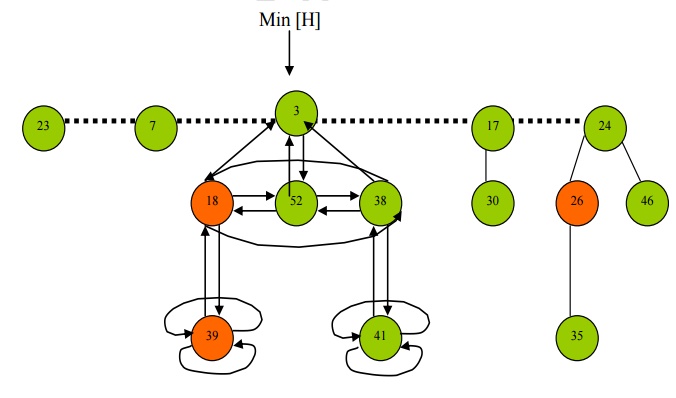
Node Pointers
- left [x]
- right [x]
- degree [x]
- number of children in the child list of x
- mark [x]
Properties:
· Collection of unordered Binomial Trees.
· Support Mergeable heap operations such as Insert, Minimum, Extract Min, and Union in constant time O(1)
· Desirable when the number of Extract Min and Delete operations is small relative to the number of other operations.
· Most asymptotically fastest algorithms for computing minimum spanning trees and finding single source shortest paths make use of the Fibonacci heaps.
Fibonacci Heap Operations:
Make Fibonacci Heap
· Assign N[H] = 0, min[H] = nil
· Amortized cost is O(1)
Find Min
· Access Min[H] in O(1) time
Uniting 2 Fibonacci Heaps
· Concatenate the root lists of Heap1 and Heap2
· Set the minimum node of the new Heap
· Free the 2 heap objects
· Amortized cost is equal to actual cost of O(1)
Insert
· Amortized cost is O(1)
· Initialize the structural fields of node x, add it to the root list of H
· Update the pointer to the minimum node of H, min[H]
· Increment the total number of nodes in the Heap, n[H]
Example:
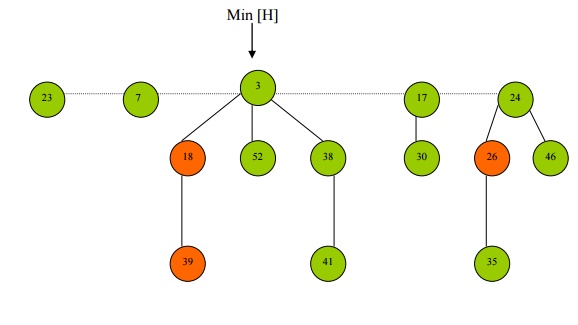
· Node 21 has been inserted
· Red Nodes are marked nodes – they will become relevant only in the delete operation.
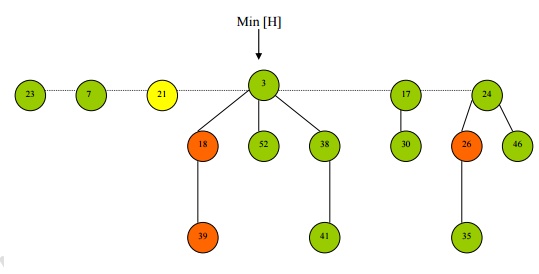
Extract Minimum Node
· Amortized cost is O(D(n))
· Make a root out of each of the minimum node‟s children.
· Remove the minimum node from the root list, min ptr to right(x)
· Consolidate the root list by linking roots of equal degree and key[x] <= key[y], until every root in the root list has a distinct degree value. (uses auxiliary array)
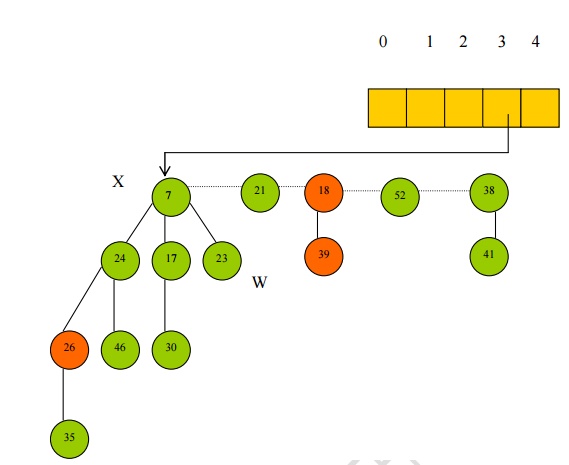
· Root Nodes are stored in the auxiliary array in the index corresponding to their degree.
· Hence node 7 is stored in index 3 and node 21 is stored in index 0.
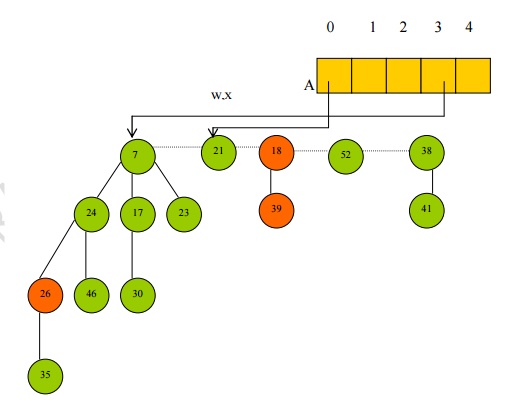
· Further, node 18 is stored in index 1
· There are no root nodes of index 2, so that array entry remains empty
· Now the algorithm iterates through the auxiliary array and links roots of equal degree such that key[x] <= key[y],
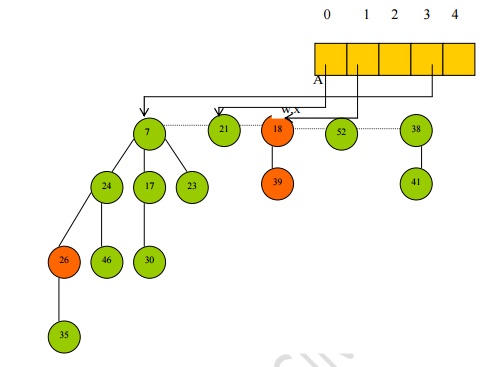
· Nodes 21 and 52 are linked so that node 21 has degree 1, and it is then linked to node 18
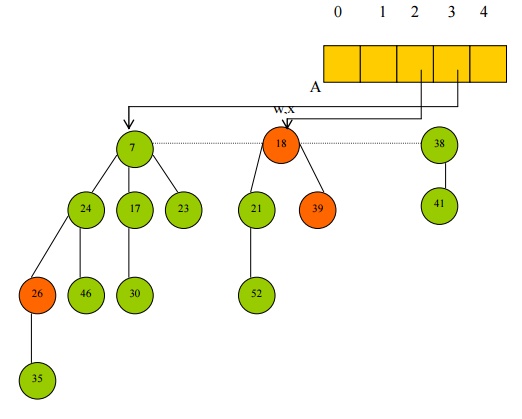
· The pointers of the auxiliary array are updated.
· But there are now no more remaining root nodes of duplicate degrees.
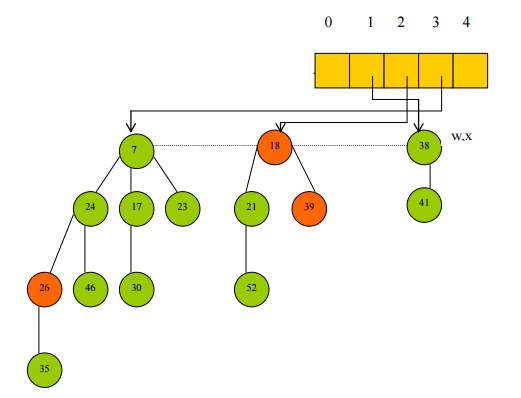
· Extract-Min is now done.
· The pointer min[H] is finally updated to the new minimum.
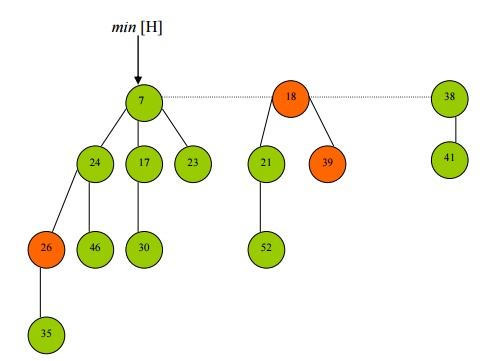
A node is marked if:
· At some point it was a root then it was linked to anther node and 1 child of it has been cut.
· Newly created nodes are always unmarked
· A node becomes unmarked whenever it becomes the child of another node.
Decrease-Key
· Amortized cost is O(1).
· Check that new key is not greater than current key, then assign new key to x
· If x is a root or if heap property is maintained, no structural changes
· Else
o Cut x: make x a root, remove link from parent y, clear marked field of x
o Perform a Cascading cut on x‟s parent y (relevant if parent is marked):
§ if unmarked: mark y, return
§ if marked: Cut y, recurse on node y‟s parent
§ if y is a root, return
· The Cascading cut procedure recurses its way up the tree until a root, or an unmarked node is found.
· Update min[H] if necessary.
Example:
· Suppose we want to decrease the keys of node 46 to 15.
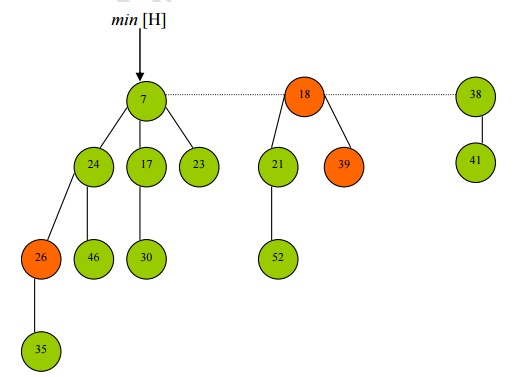
· Since the new key of node 46 is 15 it violates the min-heap property, so it is cut and put on the root.
· Suppose now we want to decrease the key of node 35 to 5.
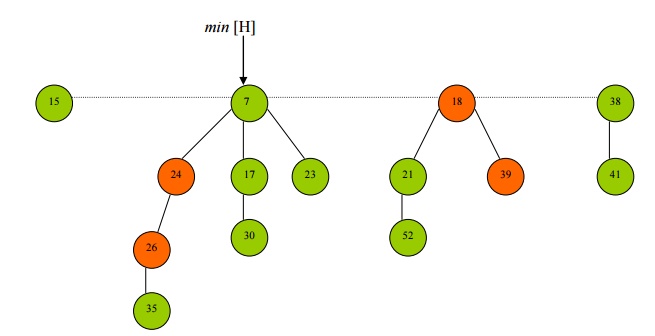
· So node 5 is cut and place on the root list because again the heap property is violated.
· But the parent of node 35, which is node 26, is marked, so we have to perform a
cascading cut.
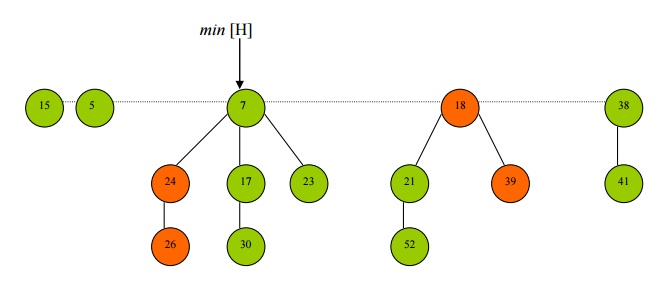
· The cascading cut involves cutting the marked node, 26, unmarking it, and putting it on the root list.
· We now repeat this procedure (recurse) on the marked nodes parent until we hit a node on the root list.
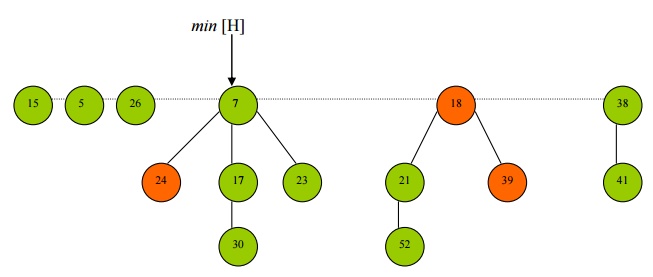
· Since the next node encountered in the cascading cut procedure is a root node – node 7 – the procedure terminates.
· Now the min heap pointer is updated.
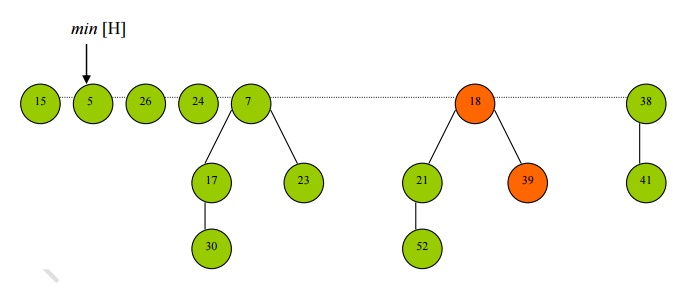
Delete-Key
· Amortized cost is O(D(n))
· Call Decease-Key on the node x that needs to be deleted in H, assigning negative infinity to it.
· Call Extract-Min on H.
Related Topics